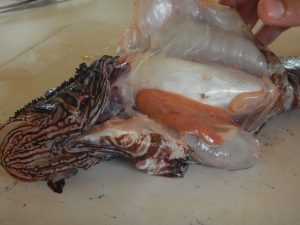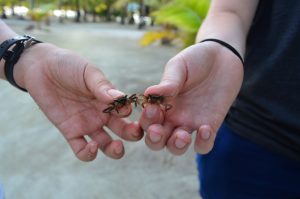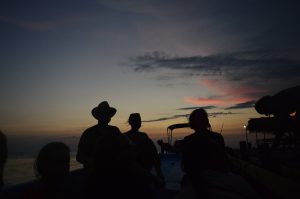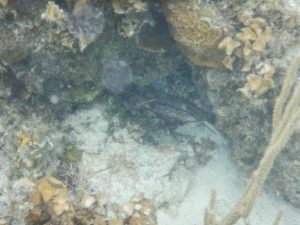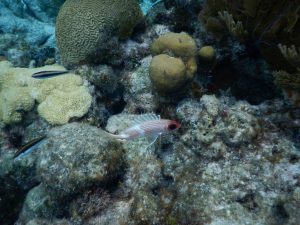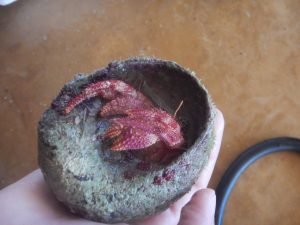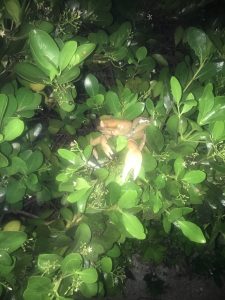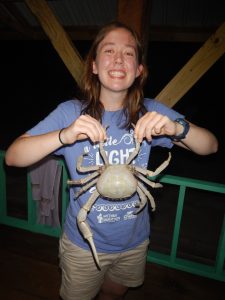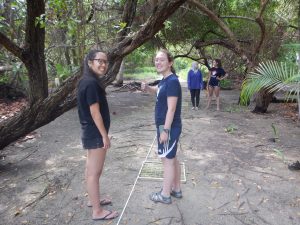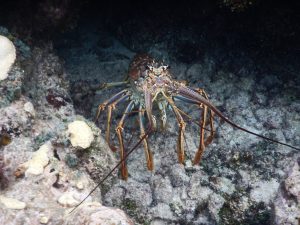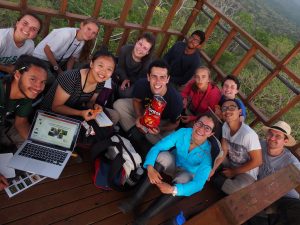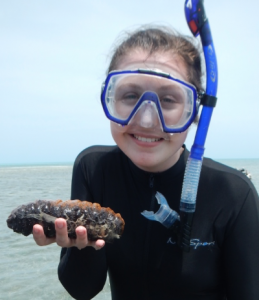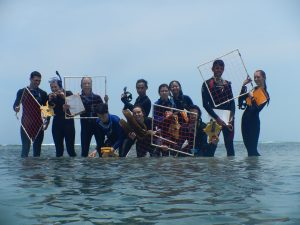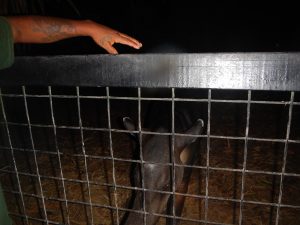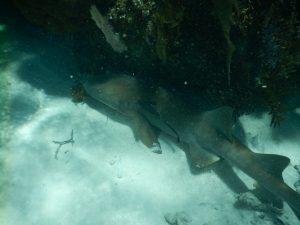This morning was super slow. After breakfast, we had a few hours to just chill while the 7 lionfish Scott had speared over the course of the week thawed. I probably should have written blogs, but instead, I took a nice nap on one of the hammocks.
Around 9, the lionfish we caught were ready to be dissected. Veronica and I worked with the largest one. It weighed 1.3 pounds and was over a foot long.
Lionfish are an invasive species in the Atlantic. They’re native to the Pacific ocean but were released into the Atlantic where they quickly began eating everything while having no natural predators. After weighing them and measuring their body length, the first part of the dissection involved removing the fish’s 13 poisonous spines. We then measured their mouth size before cutting open its body cavity. Veronica and I were supposed to figure out the fish’s sex and identify stomach contents, but we were mostly confused by this giant hard white mass in the middle of its body.
After a bit of reading the manual and confusion, we figured it was probably the swim bladder and stabbed it so it would deflate. We could then see the entirety of its organs. We found that it was male and that it had a mostly decomposed fish 2 and a half inches long in its stomach (only slightly smaller than the smallest lionfish we found).
When we finished dissecting all the fish, Scott began filleting them to prepare a ceviche. A ceviche is a dish in which raw fish is effectively cooked with acid (from limes or lemons etc) and then basically served in a salad. The ceviche was delicious. We had removed an invasive species, collected scientific data, and had a tasty snack, which is a pretty solid trio in my opinion.
After lunch, some of the class went out snorkeling in the reef near the island, but Kristen, Ceyda, Andressa, and I stayed back and instead played with the hermit crabs. We decided to dig a hole and put a bunch of hermit crabs in it. It may have been a somewhat childish activity, but it was a pretty great time. We collected about 25 hermit crabs, mostly from under the solar panels where they seemed to like to hang out. It was really funny to see them continue to climb up the steep sand walls we had dug. They always went out upside down, with their shell above them. I think this climbing strategy made it easier for them to carry the weight of their shells while climbing a difficult slope. When they made it out (and we stopped pushing them back in), they quickly walked off in all directions directly away from us and we got ready for our last afternoon activity.
Around 3, we got on the boat for one of the last times to head to a resort on one of the adjacent islands. We got to spend a few hours hanging out at a nice beach resort like we were actually on vacation and not a class. I found a few small true crabs running around.
We left a t-shirt behind (my “rice owls give back” shirt) signed by everyone on the trip, as was tradition at this resort. We were sad to head back to the research station because we knew it was almost time to leave Belize.
We ended our last night by meditating with Scott out on the pier. We all sat in a big circle and Scott led us in 10 minutes of meditation.
We then stayed up way too late chatting and admiring the ocean. Sadly we never got a cloudless night at glovers, but honestly, it didn’t really matter. I had a great night talking with everyone and even with a few of the guys stationed on the island for the Belizean coast guard. Overall, it was the perfect last day.


